Mary the Elephant was a 5-ton Asian elephant touring with the Sparks World Famous Shows circus. In September 1916, she killed her newly appointed trainer in front of a crowd in Kingsport, Tennessee. The crowd demanded justice and had her hanged from a crane on 13 September 1916. Mary went by a number of names, to include Big Mary and Murderous Mary following the killing of her trainer.
Sparks World Famous Shows
The 15-car Sparks World Famous Shows was a traveling circus that included clowns, acrobats, and wild animals. The circus featured Big Mary as its star attraction. Charlie Sparks, the owner of the circus, claimed Mary to be three inches taller than the famous Jumbo the Elephant. According to Sparks, Mary the Elephant was the “largest living land animal on Earth.”
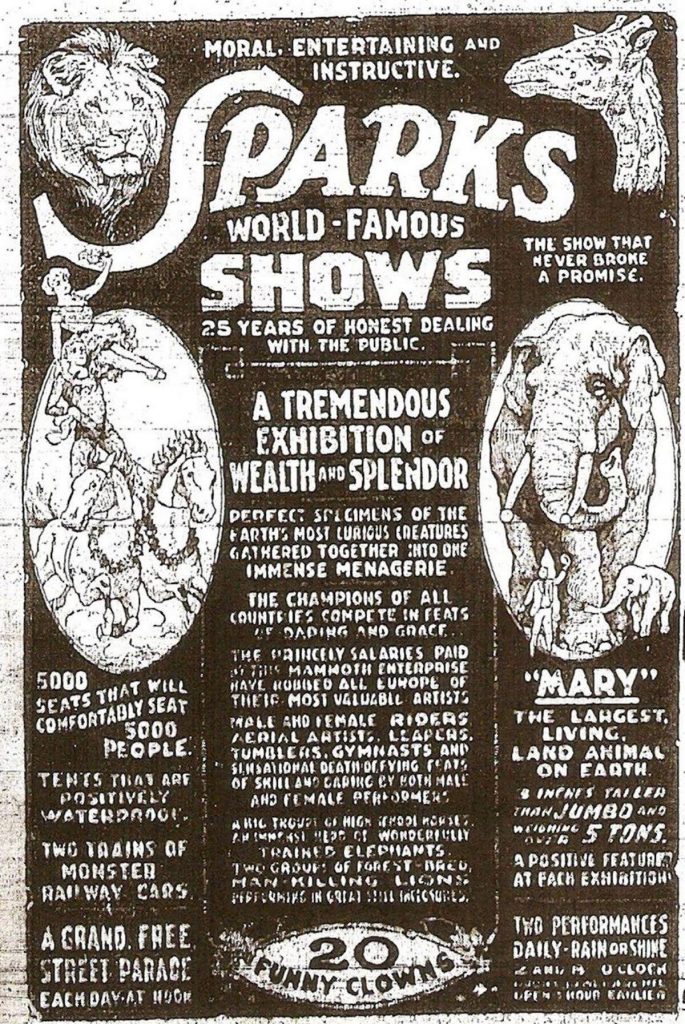
Mary the Elephant Kills Red Eldridge
In the summer of 1916, the Sparks World Famous Shows made its way to the small town of Kingsport, Tennessee. A crowd of people gathered as Big Mary led the circus parade down the street.
Along the way, Mary, the otherwise-gentle circus elephant, became distracted after noticing some tasty watermelon rind on the road. She veered off course to make her way to the delicious fruit.
Riding on the elephant’s back, the trainer needed to get Mary back on course. He used a large metal hook and poked her behind the ear.
The trainer was a transient drifter named Red Eldridge. In actuality had zero experience in dealing with elephants. He started handling Mary just the day before for the Sparks World Famous Shows circus company. Prior to this gig, he worked a bellhop at the Riverside Hotel in St. Paul.
Like any mistreated animal, perhaps Mary simply reached her breaking point when the trainer drove the metal hook into her flesh. Whatever the case may be, reports state that Mary’s next move sealed her fate. Using her trunk, the five-ton animal grabbed Eldridge and flung him to the ground with tremendous force. She then crushed Eldridge’s skull beneath her feet.
A Panicked Town
Eldridge died instantly. But this was far from the end of the episode. A horrified crowd witnessed the entire proceedings. They chanted “Kill it! Kill it!“. Moments later, Hench Cox, a local blacksmith fired a number of rounds into the beast. The bullets failed to penetrate the thick hide of the elephant.
From the outset of the tragic event, the townspeople became whipped into a frenzy. They immediately began calling for Mary’s execution. Although they would have had little effect, a local blacksmith even started firing bullets into Mary’s thick hide.
Following Eldridge’s death, Mary was no danger to the crowd. After killing her trainer, she had calmed down substantially. It is clear that Mary simply acted according to her instinctual feelings and responded to the circumstances at hand.
An Era of Animal Cruelty and Demand for Justice
The question remains as to why Sparks World Famous Shows put their prize show animal in the hands of an inexperienced and negligently-trained drifter. But the actions of the circus’s representatives were not those of benevolent masters.
Indeed, perhaps Mary became accustomed to such treatment in the fledgling circus. After all, the Sparks World Famous Shows was no financial powerhouse on the order of Barnum & Bailey. The company probably did not have anything approaching the resources to care for a 10,000-pound Asian elephant properly.
In those days, circus animals were treated as little more than beasts of burden fit for a brief life of grueling slavery. They were often physically abused and starved. Is it any wonder that a few lashed out at their tyrannical masters?
But the people of Kingsport and the surrounding region did not see things this way. A slow-paced agricultural community in the dying throes of a sizzling southern summer, Kingsport and nearby towns yearned for entertainment that September. The turn of events added some excitement to the day. Instead of a circus show, they demanded a lynching.
Charlie Sparks Appeases the Angry Crowd
Like any mob, the locals in Kingsport were half-driven by the desire to find a scapegoat and half-driven to seek out a spectacle to quell the boredom they often felt in their personal lives. Like the ancient Romans, the public display of an animal slaughter probably fascinated many of them.
Although they would have rationalized their murderous intent with a barrage of platitudes at the time, the townsfolk around Kingsport demanded that Mary die to appease their bloodlust.
His business already dependent on the whims of the crowd, circus owner Charlie Sparks caved to mob demands. He gave up Mary to the local authorities. The town decided in an informal, fly-by-night “trial” that Mary would suffer the usual fate of those convicted of murder in those days. She was to be hung by the neck until death occurred.
Grim Proceedings
The next day, “Murderous Mary” (as she became known) was thus transported to a nearby train yard in the town of Erwin, Tennessee. A crowd of thousands of men, women, and children gathered to witness the event of her execution. The execution was essentially murder-as-theater. There would have been little pretense to justice throughout that day of unseasonable rain and gloom.
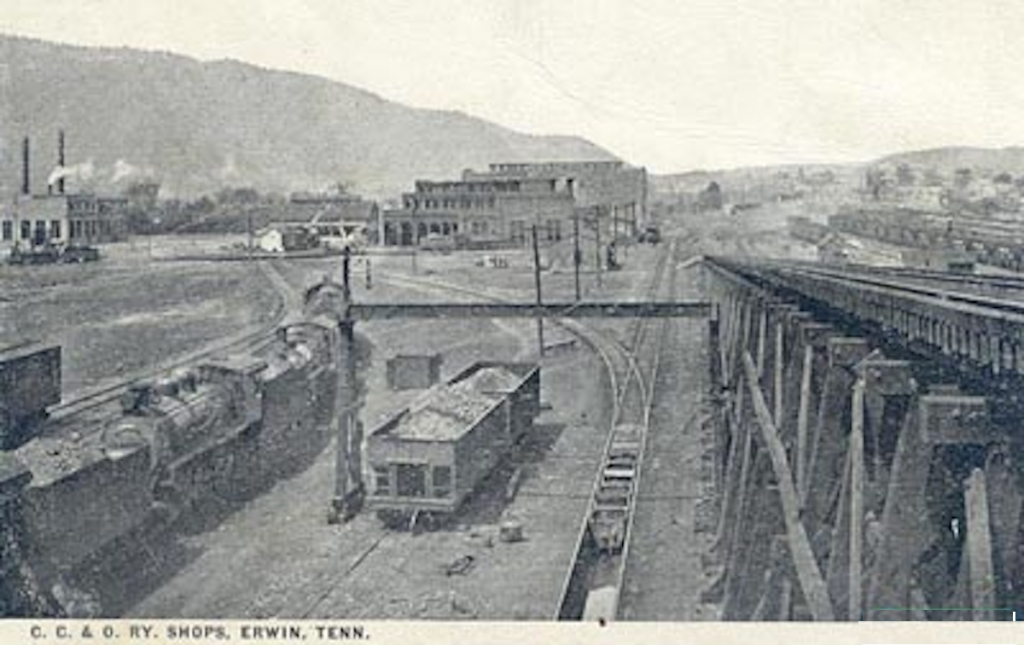
The proceedings that evening were truly bizarre. Hanging a convicted murderer is an unpleasant task by any definition, but the question of how to hang an elephant seems almost like the stuff of science fiction.
Yet locals came up with a “creative” solution to their problem. By employing a makeshift noose made from chains attached to a 100-ton railcar-mounted derrick, locals devised the means of Mary’s demise in their own twisted form of moral ratiocination.
Murderous Mary Hanged
What happened next on September 13, 1916, is unimaginable. They wrapped the chain around her neck and hoisted her up by the massive crane. Mary flailed in panic as she suffocated due to the sheer force of the chains acting against her enormous bodyweight.
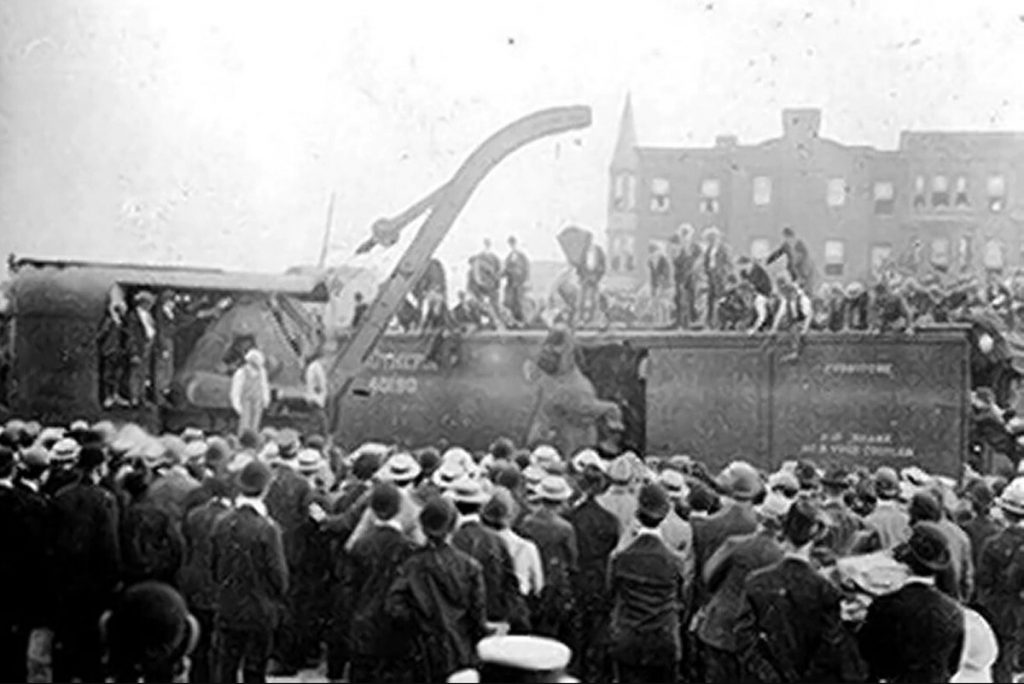
Death did not come swiftly for Big Mary. At first, the chains snapped from the force of her enormous girth and whipped the air in a fury. The crack of the breaking chains, and the crash of Mary’s body as she fell to the earth, must have been terrifying to the crowd. Indeed, accounts suggest that people ran in terror from the sight.
Final Moments of Mary’s Life
Of course, the townspeople’s abject cruelty is unimaginable in our era of animal rights law. In falling to the ground, Mary’s great mass most likely shattered her hip. She would have been in excruciating pain. After falling, she is reported to have sat motionless like a rabbit. Her wailing must have stunned the crowd of 2,500 spectators into abject silence.
Undeterred from their terrible mission, the executioners fashioned a new noose from a fresh coil of chains. They hanged Mary once again. But this time, the massive gallows did their job. In what must have seemed like an interminable process, Mary strangled to death before her accusers’ eyes.
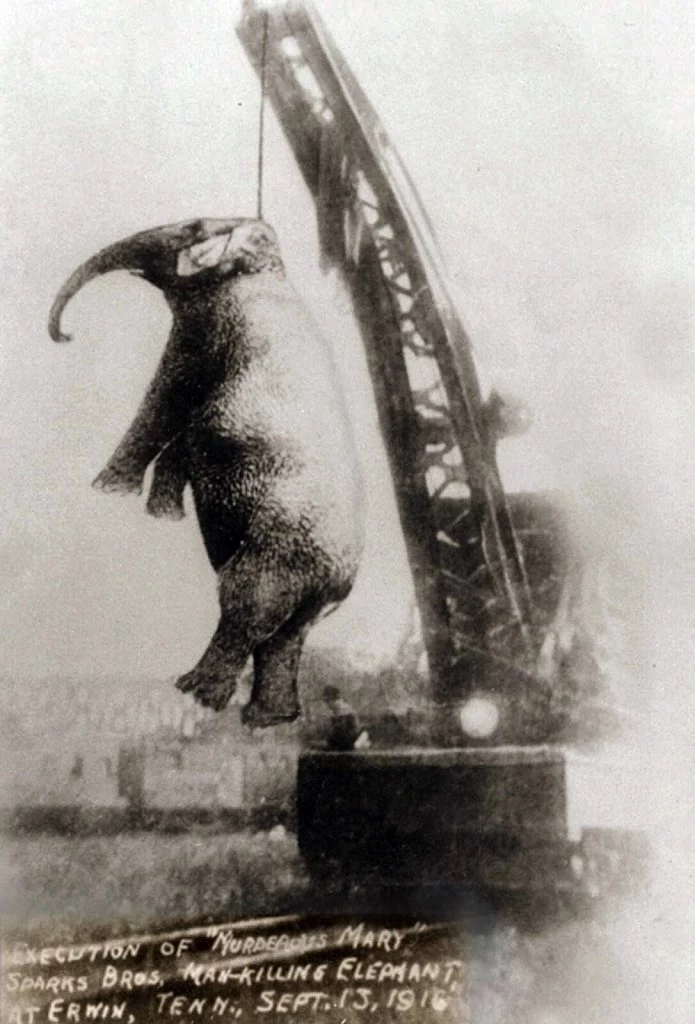
One wonders if any of those assembled then saw the folly of their thinking. We know at least one person captured the moment by taking the famous photograph of Mary hanging from a crane.
See Also: John Babbacombe Lee: The Man They Could Hang
As the crowd began dispersing, the executioners buried Mary in an impromptu grave in the train yard.
Mary the Elephant Grave
Allegedly, residents of Erwin buried Mary the Elephant’s remains in a pit in front of the railroad shop doors. The grave itself is unmarked and remains so intentionally. The execution of Big Mary in Erwin, Tennessee is not something the town is proud of.
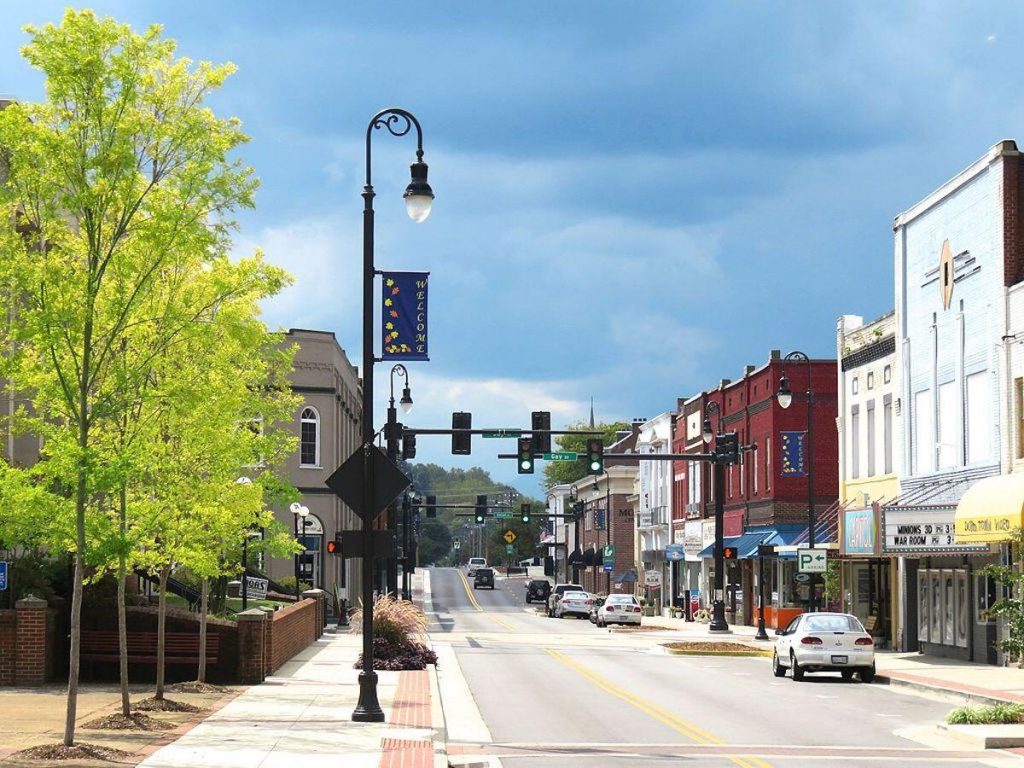
“It was a black eye for everyone. All the locals, we used to hate it when people would come into town and ask us, ‘Were you really the town that hanged the elephant?’ No one wanted to talk about it.”
Jamie Rice, president of RISE Erwin
Erwin came to terms with its past and decided to use their notoriety to reinvent themselves for a good cause. RISE Erwin, which stands for Rejuvenate, Invest, Support, and Energize Erwin is doing just that. In the last few years, the town began yearly auctions of fiberglass elephants created by local artisans. They provide the proceeds to the elephant sanctuary in Hohenwald, Tennessee.
Further reading/resources: